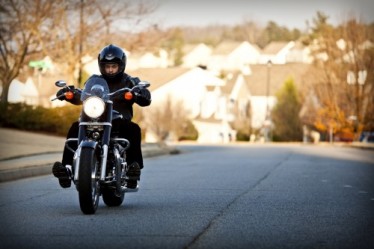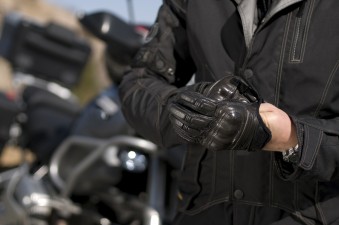With summer approaching, many motorcycle owners are getting their bikes ready for rides. Some use motorcycles as their main means of transportation, while others take weekend trips to the lake or countryside.

When done safely, riding a motorcycle is a great way to see the country while traveling light and saving money on gas. However, there is an inherent risk involved in driving a motorcycle, and the past few decades have seen a large spike in the number of motorcyclist deaths. In fact, motorcyclist fatalities more than doubled from 1997 to 2008.
Although not mandatory in all states, wearing a helmet while riding a motorcycle is undoubtedly the best thing one can do to increase the chances of surviving a motorcycle accident. In addition, participating in a motorcycle training course and following safety tips can hopefully help reduce motorcycle fatalities in years to come.
Motorcycle Safety Foundation
If you are new to riding motorcycles or even if you are an experienced rider who is interested in learning new riding tips, consider taking a motorcycle training course. The Motorcycle Safety Foundation has training courses for riders of all abilities. Training courses are a hands-on way to learn the parts of a motorcycle, proper riding techniques as well as laws one needs to know while riding on roads and highways.
Training Courses
Motorcycle training courses cover topics like braking and turning techniques. In addition to learning about what to do, motorcycle riders also get to practice the techniques while being assisted by an instructor. Motorcyclists learn the proper gear to wear—specifically, what gear offers the best protection in a crash.
Strategies to employ in different traffic situations are covered, as well as highway driving strategies and what to be aware of in different situations.
Helmets
Anyone can recover from scrapes, cuts and even a broken bone, but the one part of the body that is the most important to protect is the head. This is especially true when riding a motorcycle—it's imperative for motorcyclists to have head protection in the form of a helmet.
A good helmet should fit properly and be Department of Transportation compliant (compliant helmets will have a DOT sticker on them). Helmets are made in a number of styles and colors, but the essential consideration is that a motorcyclist’s helmet be neither too tight or too big.
Motorcycle helmets have come a long way in the past couple decades. No longer heavy or obtrusive, they are made of lightweight materials and can be surprisingly comfortable while keeping riders safe. Wearing a helmet can actually make motorcycle driving more pleasurable, as it cuts down on environmental noise and can even reduce driver fatigue.
When buying a motorcycle helmet, keep in mind the four major parts that work together to keep your head safe:
• An outer shell
• An impact-absorbing liner
• The comfort padding
• A good retention system.
Some states require a certain amount of reflectivity on a helmet. Make sure to check the laws in your state to be sure you have one that complies with them.
Of course, once you have your helmet, make sure you wear it every time you ride. Whether you are going on a long road trip or a quick trip to the corner store, never turn then ignition key without wearing your helmet.
Safety Gear
What a motorcycle rider chooses to wear while driving or riding can have a major impact on whether or not the rider is injured in a crash. Motorcyclists are best advised to wear clothes that will be resistant to tearing, in the event of being involved in a crash.
Unfortunately, motorcycle gear can be very expensive. Try to find a store selling used gear, or check Craigslist to try to find a deal.
A strong motorcycle jacket is very important for the safety of your upper body. Motorcycle jackets are typically made of a strong material such as denim, heavy nylon or leather. Leather has been a material of choice for many bikers for many years. Leather offers you the most protection when it comes to abrasion, as it is very difficult to tear. Nowadays, many motorcycle jackets are equipped with air ventilation systems to keep you cool while you ride.
When driving or riding a motorcycle, you should always have eye protection. Windshields are not enough. To guard against sand or gravel being kicked up by other motorists and possibly hitting your eyes at a great velocity, make sure you either have a shield on your helmet or are wearing goggles or shatterproof glasses.
Eye protection should be clean and unscratched. If you will be driving at night, make sure you have protective glasses that do not interfere with your vision—in other words, don’t rely on sunglasses for nighttime driving!
Pants are the next piece of gear that can keep you safe in the event of a fall or accident. Again, these are often made of leather and come in a number of different styles. Loose pants or shorts should be avoided while riding a motorcycle as they give little to no protection. Some riders choose jackets and pants with rigid "body armor" inserts in critical areas for additional protection.
Gloves and boots are other pieces of gear that can keep one safe on a motorcycle. When cars in front of you throw up stones or other road detritus, you will be happy to be wearing gloves that protect your hands. Boots should have heavy soles that provide traction when putting your foot down to stop at traffic lights or stop signs.

Be Safe and Enjoy
Before you ride, make sure you have all of the essential gear that will keep you safe on the road. First and foremost, have a well-fitting helmet that is certified safe by the Department of Transportation. Next, make sure you are wearing the right jacket, pants, boots and gloves. Eye protection is very important, and if your helmet does not have a visor, have the proper goggles or glasses.
If your state requires a motorcycle license, make sure yours is up to date. Also, your motorcycle must be properly insured and registered. Take a motorcycle safety course to learn techniques that will keep you safe on the road and help you to understand the parts of your motorcycle. Not only is it important to understand how to safely operate your bike, you must constantly be aware of other drivers on the road and anticipate problem scenarios before they happen.
Driving your motorcycle should be fun and filled with the freedom of the road. If you are responsible and understand how to safely operate your motorcycle, you can avoid dangerous situations and enjoy the open road all spring and summer long.
Get the Help You Need
The team at The Flood Law Firm has years of experience in representing the victims of motorcycle crashes and other vehicle-related accidents. If you or someone you love needs help, contact us at (860) 346-2695 or fill out the form on the right hand side of this page.
